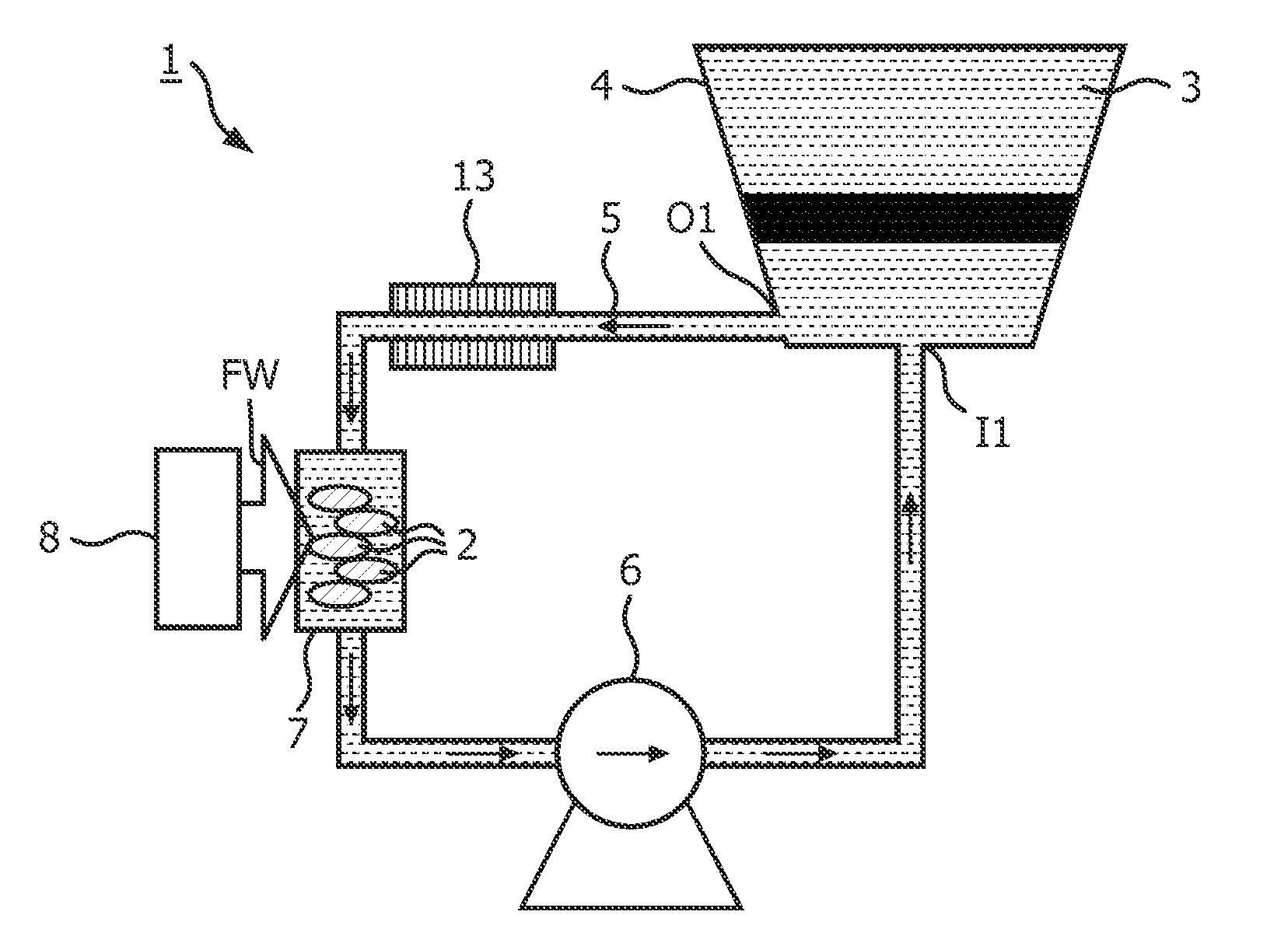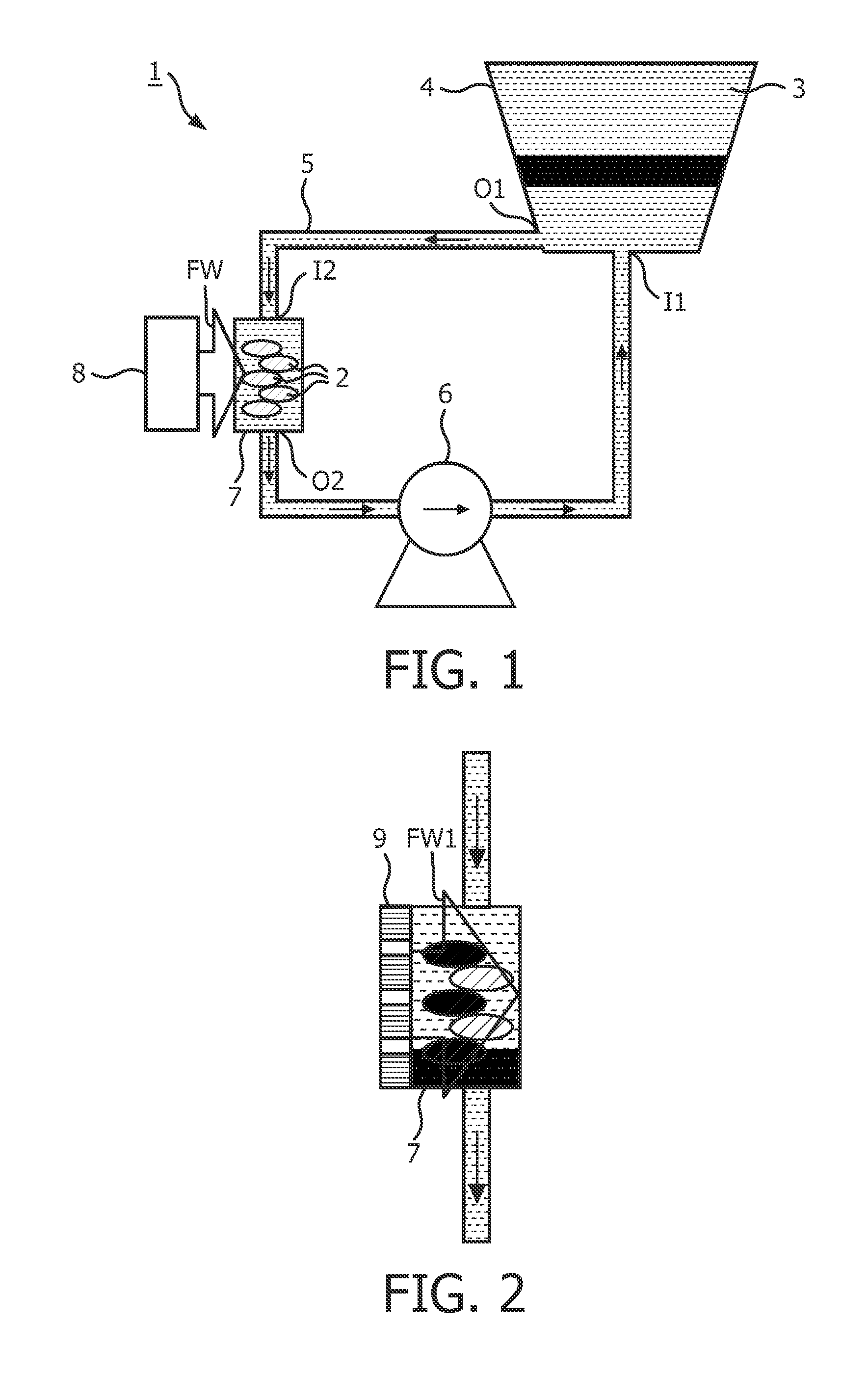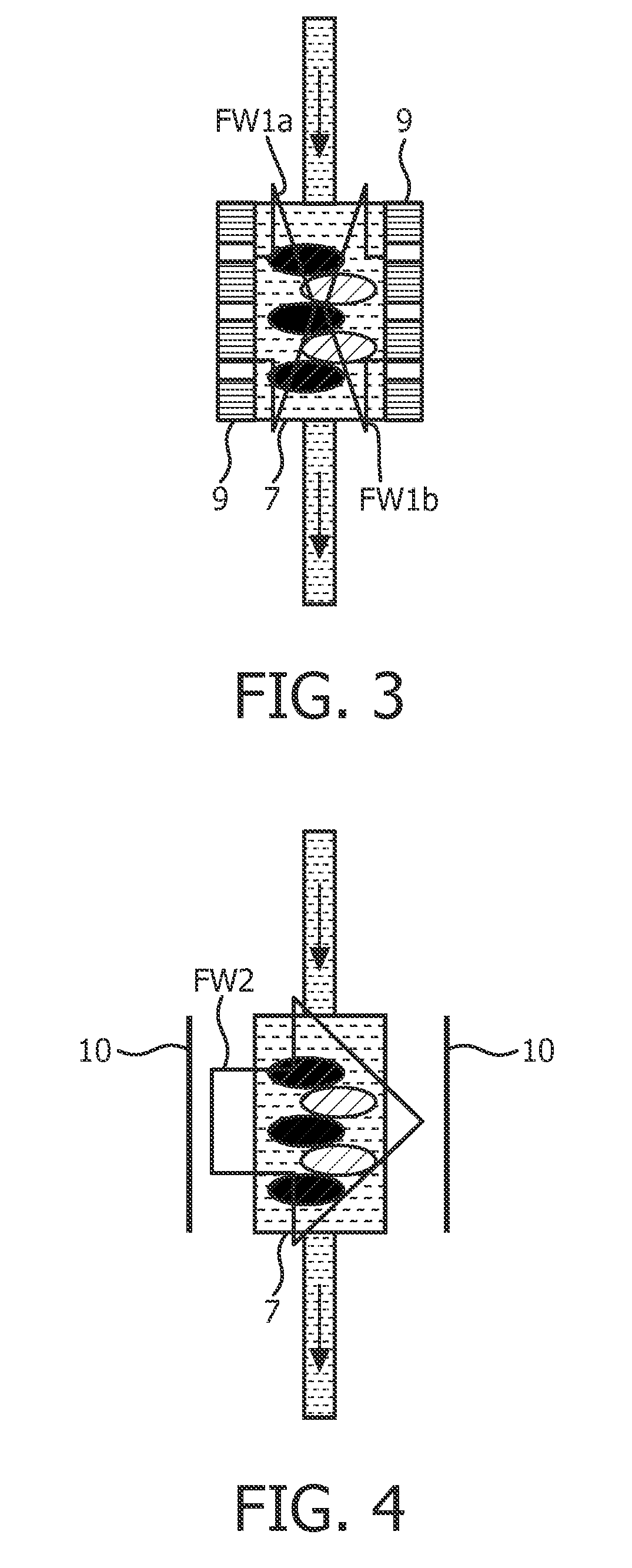Method and apparatus for decocting ingredients in a solvent
a solvent and ingredient technology, applied in tea extraction, separation processes, applications, etc., can solve the problems of affecting the taste or health of users, affecting the convenience of the process, etc., and achieve the effects of slow extraction of compounds, high concentration of extracted compounds, and quick saturation around ingredients
- Summary
- Abstract
- Description
- Claims
- Application Information
AI Technical Summary
Benefits of technology
Problems solved by technology
Method used
Image
Examples
first embodiment
[0030]FIG. 1 depicts an apparatus 1 according to the invention for decocting ingredients 2 in a solvent 3. The apparatus comprises:[0031]a first container 4 for containing the solvent,[0032]a pipe 5 connecting an output O1 of said first container to an input I1 of said first container,[0033]a pump 6 placed in series with said pipe for circulating the solvent from said output O1 to said input I1,[0034]a second container 7 for containing the ingredients, said second container being placed in series with said pipe, such that the solvent circulating in the pipe can circulate in between the ingredients,[0035]a wave generator 8 placed next to said second container for generating a field of waves FW towards the ingredients.
[0036]For example, ingredients may correspond to tea leaves, plants, leaves, coffee beans, herbs, vegetable roots, fruits, or a mix of those ingredients. For example, the solvent may correspond to water, mineral water, tap water, salted water, alcohol, or a mix of those ...
second embodiment
[0052]FIG. 2 depicts a partial view of an apparatus 1 according to the invention for decocting ingredients 2 in a solvent 3. In addition to elements comprised in an apparatus as in FIG. 1, the wave generator 8 comprises ultrasound probes 9 for generating a field of ultrasound waves. The field of ultrasound waves is illustrated by arrow FW1. The ultrasound probes are placed adjacent to the walls of the second container so that ultrasound waves can propagate inside the second container, in a way similar to wave propagation in a so-called ultrasonic bath or ultrasonic cleaner. For example, the ultrasound probes correspond to piezoelectric material transducers, and are connected to an external controller (not shown) for generating ultrasound waves in the frequency range [20 kHz; 400 kHz]. The field of ultrasound waves allows disrupting the wall of the cells in the ingredients by the cavitation effect. Alternatively (not shown), the ultrasound probes are not placed adjacent to the walls ...
third embodiment
[0053]FIG. 3 depicts a partial view of an apparatus 1 according to the invention for decocting ingredients 2 in a solvent 3. In addition to elements comprised in an apparatus as in FIG. 2, the ultrasound probes 9 are placed around the second container 7. The ultrasound probes are placed adjacent to the walls of the second container so that ultrasound waves can propagate inside the second container, in a way similar to wave propagation in a so-called ultrasonic bath. By placing multiple probes around the second container, multiple fields of waves are generated, such as a first field of ultrasound waves FW1a and a second field of ultrasound waves FW1b if two probes are used. This allows applying a field of ultrasound waves along different directions towards the ingredients so as to maximize disruption of the wall of the cells in the ingredients by the cavitation effect.
PUM
 Login to View More
Login to View More Abstract
Description
Claims
Application Information
 Login to View More
Login to View More - R&D
- Intellectual Property
- Life Sciences
- Materials
- Tech Scout
- Unparalleled Data Quality
- Higher Quality Content
- 60% Fewer Hallucinations
Browse by: Latest US Patents, China's latest patents, Technical Efficacy Thesaurus, Application Domain, Technology Topic, Popular Technical Reports.
© 2025 PatSnap. All rights reserved.Legal|Privacy policy|Modern Slavery Act Transparency Statement|Sitemap|About US| Contact US: help@patsnap.com



